#sci-fi old men can be so shaped. so many moralities. so much fun
Explore tagged Tumblr posts
Text
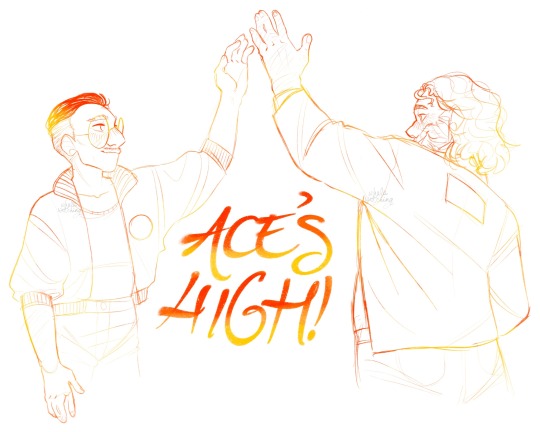
revolutionary connotations…
#disco elysium#harry du bois#kim kitsuragi#me drawing clothing: nobody will notice that i dont understand fabric physics#if it looks okay it IS okay thats my motto#i greatly enjoy drawing them#sci-fi old men can be so shaped. so many moralities. so much fun#every tidbit of disco elysium lore makes me rabidly hungry#where is my semester class on revacholian history? where is my year abroad to the pale??#kim kim kim i woulda been a pilot too if there’d been an air force#im also very into the little gap between the middle two main fingers. looks professional. ok back to lying about clothing wrinkles#ace’s high!!! ace’s low!!! ace’s goin in for a warm and tender hug!!!
188 notes
·
View notes
Text
Colonialism
You back into things sometimes.
One of my many guilty pleasures is old school pulp, which I first encountered with the Doc Savage reprints in the 1960s, then old anthologies, then back issues at conventions, and now thanks to the Internet, an almost limitless supply.
And to be utterly frankly, a lot of the appeal lays in the campiness of the covers and interior art -- brass plated damsels fighting alien monsters, bare chested heroes combatting insidious hordes, etc., etc., and of course, etc.
Once past age 12, I never took these covers or the covers of modern pulps such as James Bond, Mike Hammer, or Modesty Blaise seriously; they were just good, campy fun.
While my main focus remained on the sci-fi pulps, I also kept an eye on crime and mystery pulps, war stories, and what are sometimes called “sweaties”, i.e., men’s adventure magazines.
Despite the differences in the titles and genres, certain themes seemed to pop up again and again.
Scantily clad ladies, typically in some form of distress, though on occasion dishing out as good if not better than they got.
Well, the pulps that drew my attention were the pups made for a primarily male audience (though even in the 1930s and 40s there were large numbers of female readers and writers in the sci-fi genre). Small wonder I was drawn to certain types of eye candy; I had been culturally programmed that way.
That’s a topic well worthy of a post or two on its own, so I’m putting gender issues / the patriarchy / the male gaze aside for the moment.
What I’m more interested in focusing on is the second most popular characters to appear on the covers (and in the stories as well).
The Other.
The Other comes in all shapes / sizes / ethnicities. Tall and short, scrawny and beefy, light or dark, you name it, they’ve got a flavor for you.
“Injuns” and aliens, Mongols and mafiosi, Africans and anarchists.
Whoever they were ”they ain’t us!”
Certain types of stories lend themselves easily to depicting the villainous Other.
Westerns, where irate natives can always be counted on to launch an attack.
War stories, where the hero (with or without an army to help him) battles countless numbers of enemies en masse.
Adventure stories, where the hero intrudes in some other culture and shows them the error of their ways.
Detective stories, where the Other might be a single sinister mastermind but still represents an existentialist threat.
And my beloved sci-fi stories?
Why, we fans told ourselves our stories were better than that! We didn’t wallow in old world bigotry, demonizing blacks and browns and other non-whites because of their skins.
Oh, no: We demonized green skinned aliens.
Now I know some of you are sputtering “But-but-but you wrote for GI Joe!”
Boy howdy, are you correct.
And boy howdy, did we ever exploit the Other with that show.
I never got a chance to do it, but I pitched -- and had Hasbro accept -- a story that would have been about the way I envisioned Cobra to have formed and been organized, and would focus on what motivated them.
They were pretty simplistic greedheads in the original series, but I felt the rank and file needed to be fighting for a purpose, something higher to spire to that mere dominance and wealth.
I never got to do “The Most Dangerous Man In The World” but I was trying to break out of the mold.
For the most part, our stories fit right into the old trope of The Other.
Ours were mostly about the evil Other trying to do something nefarious against our innocent guys, but there’s an obverse narrative other stories follow, in which our guys go inflict themselves on The Other until our guys either come away with a treasure (rightfully belonging to The Other but, hey, they really don’t deserve it so we’re entitled to take it from them), or hammer The Other into submission so they will become good ersatz copies of us (only not so uppity as to demand equal rights or respect or protection under law).
These are all earmarks of a very Western (in the sense of Europe and America…with Australia and New Zealand thrown in) sin: Colonialism.
Now, before going further let’s get out terms straight.
There’s all sorts of different forms of colonialism, and some of them can be totally benign -- say a small group of merchants and traders from one country travel to a foreign land and set up a community there where they deal honorably and fairly with the native population.
The transplanted merchants are a “colony” in the strictest sense of the term, but they coexist peacefully in a symbiotic relationship with the host culture and both sides benefit, neither at the expense of the other.
Oh, would that they could all be like that…
Another form of colonialism -- and one we Americans are overly familiar with even though there are all sorts of variants on this basic idea -- is the kind where one culture invades the territory of another and immediately begins operating in a deliberately disruptive nature to the native population.
They seek to enslave & exploit or, failing that, expel or eradicate the natives through any means possible.
It’s the story of Columbus and the conquistadors and the pilgrims and the frontiersmen and the pioneers and the forty-niners and the cowboys and the robber barons.
It’s the story where different groups are deliberately kept separate from one another by the power structure in place, for fear they will band together and usurp said power structure (unless, of course, they band together to kelp make one of ours their leader, and build a grand new empire just for him).
It’s the story where our guys never need make a serious attempt to understand the point of view of The Other, because they are just strawmen to mow down, sexy lamps to take home.
I think my taste in sci-fi and modern pulp writing in general started to change around the mid-1970s.
Being in the army quickly cleared me of a lot of preconceptions I had about what our military did and how they did it.
The easy-peasy moral conflicts of spy novels and international thrillers seem rather thin and phony compared to the real life complexities of national and global politics.
Long before John Wick I was decrying a type of story I referred to as “You killed my dog so you must die.” Some bad guy (typically The Other) does a bad thing and so the good guy (one of ours -- yea!) must punish him.
Make him hurt.
Make him whimper
Make him crawl.
Make him suffer.
The real world ain’t like that.
Fu Machu falls to Ho Chi Minh.
As entertaining as the fantasy of humiliating and annihilating our enemies may be…we gotta come to terms with them, we gotta learn to live with them.
That’s why my favorite sci-fi stories now are less about conflict and more about comprehension.
It’s better to understand than to stand over.
. . .
The colonial style of storytelling as the dominant form of story telling is fairly recent, dating only from the end of the medieval period in Europe and the rise of the so-called age of exploration.
This is not to say colonial story telling didn’t exist before them -- look at what Caesar wrote, or check out Joshua and Judges in the Old Testament -- but prior to the colonial age it wasn’t the dominant form of storytelling.
Most ancient stories involve characters who, regardless of political or social standing, recognize one another as human beings.
And when gods or monsters appear, they are usually symbols of far greater / larger forces & fates, not beasts to be subdued or slain.
Medieval literature is filled with glorious combat and conflict, but again, it’s the conflict of equals and for motives and rationales that can easily be understood.
It was only when the European nations began deliberately invading and conquering / dominating foreign lands that colonialism became the dominant form of storytelling.
It had to: How else could a culture justify its swinish behavior against fellow human beings?
Even to this day, much (if not most) popular fiction reflects the values of colonialism.
Heroes rarely change.
Cultures even less.
We’ve kept The Other at arms length with popular fiction and media, sometimes cleverly hiding it, sometimes cleverly justifying it, but we’ve had this underlying current for hundreds of years.
Ultimately, it hasn’t served us well.
It traps us in simplistic good vs evil / us vs them narratives that fail to take into account the complex nature of human society and relationships.
It gives us pat answers instead of probing questions.
It is zero sum storytelling: The pie is only so big, there can’t be more, and if the hero doesn’t get it all, he loses. (John D. MacDonald summed up this philosophy in the title of one of his books: The Girl, The Gold Watch, And Everything.)
It’s possible to break out of that mind set -- The Venture Brothers animated series brilliant manages to combine old school pulp tropes with a very modern, very perceptive deconstruction of the form -- but as posted elsewhere, imitation is the sincerity form of flattery that mediocrity can pay to greatness, so while I certainly applaud The Venture Brothers I don’t want to encourage others to follow in their footsteps.
Because they won’t.
They’ll pretend they will, but they’ll veer off course and back into the old Colonialism mindset.
We need to break out, break free.
Here in the U.S. it’s African-American History Month.
The African-American experience is far from the Colonialism that marks most white / Western / Christian storytelling (and by storytelling I include history and journalism as well as fiction; in fact, anything and everything that tells a narrative).
It’s a good time to open our eyes, to see the world around us not afresh, but for the first time.
Remove the blinders.
I said sometimes you back into things.
Getting a clearer view of the world I’m in didn’t come from a straightforward examination.
It came from a counter-intuitive place, it found its way back to the beginning not by accepting what others said was the true narrative, but by following individual threads.
It came from Buck Rogers and the Beat Generation and Scrooge McDuck and the sexual revolution and Zen And The Art Of Motorcycle Maintenance and the civil rights era and Dangerous Visions and the Jesus Movement and Catch-22 and the Merry Pranksters.
It came from old friends, some of whom inspired me, some of whom disappointed me, and yet the disappointments probably led to a deeper, more penetrating insight into the nature of the problem.
This Colonialism era must come to a close.
It can no longer sustain itself, not in the world we inhabit today.
It requires a new breed of storytellers -- writers and artists and poets and journalists who can offer
It’s not a world that puts up barriers by race or gender, ethnicity or orientation, ability or age.
There’s ample opportunity for open minds.
All it asks of us is a new soul.
© Buzz Dixon
#colonialism#morals#ethics#philosophy#history#Black History Month#how this writer's mind works#GI Joe
10 notes
·
View notes
Photo
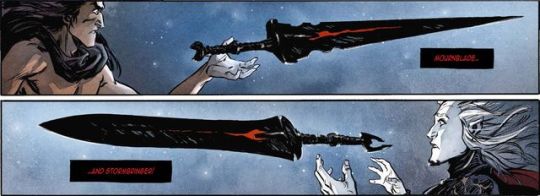
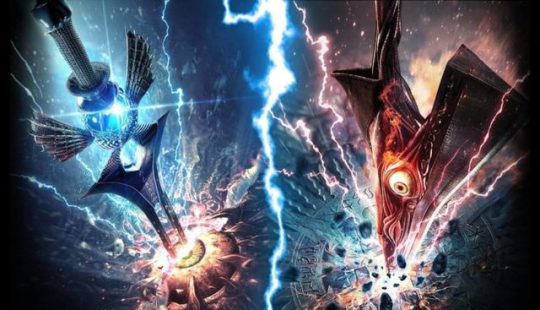
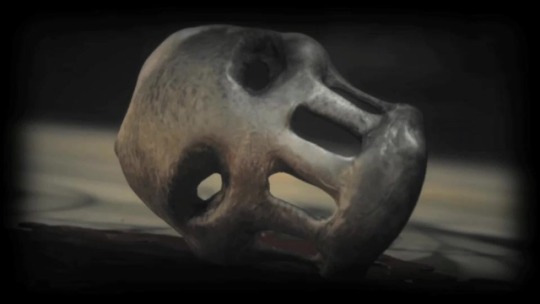
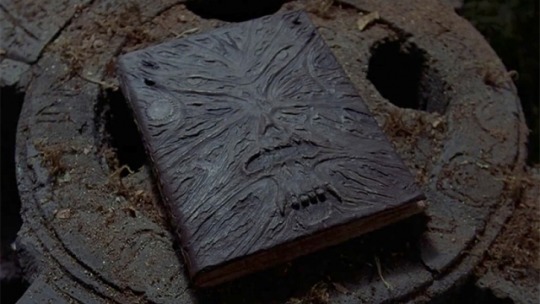
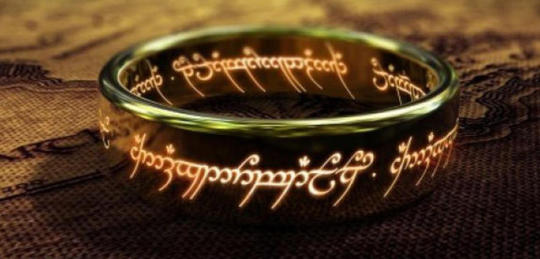
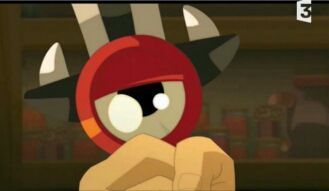
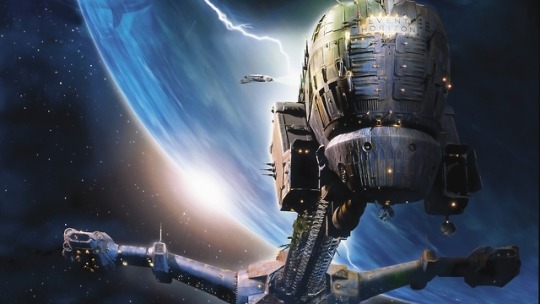

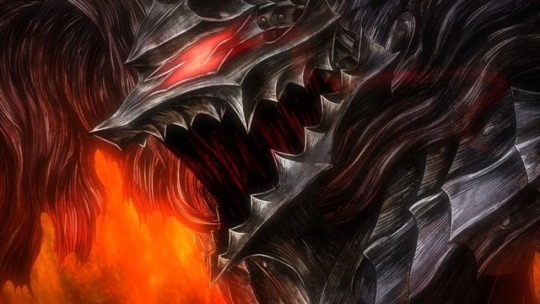
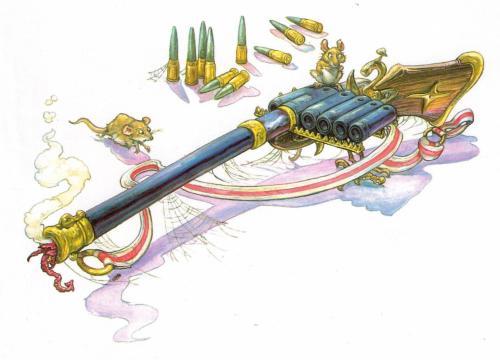
30 Day Monster Challenge 2 - Day #16: Favorite Evil Weapon/Object
1. Stormbringer (Elric of Melnibone)
The Black Blade. Daughter of Arioch. The Stealer of Souls. One of the single most legendary swords in all of fantasy, present in every universe in at least one form or another. A demon of chaos bound by the Lords of Law into the shape of a weapon. Whoever wields it can drain the souls from whoever they stab and sustain themselves with it, but is driven by a terrible hunger. The Black Blade has a will of its own, and it howls for blood as it is swung. In short, the definitive evil weapon.
What makes Stormbringer stand out from its later imitators, and even previous legendary evil weapons, is how it affects its primary wield, Elric of Melnibone. As an albino, Elric is sickly, and usually uses medicine and dark magic to stay alive. But abroad in the Young Kingdoms, Elric has to rely on Stormbringer to survive. Even as Elric connects with people outside his home kingdom, they are bound to die whenever he needs to stay alive, no matter how much Elric tries to fight it. Stormbringer is essentially a manifestation of Elric’s burden as the Champion of Balance, but also his greater isolation that distances him from being able to make connections. Elric makes it clear that Stormbringer isn’t some kind of ultimate weapon, it’s a crutch, a drug that ultimately consumes its user. And in the end, that’s what happens to Elric; when the entire universe is consumed by chaos, Stormbringer finally turns on Elric before disappearing into the apocalypse.
2. Soul Edge/Soul Calibur (Soulcalibur)
So this is honestly cheating, but I just can’t pick between the two swords. Soul Edge is the clear Stormbringer descendent and looks rad as hell to boot. Even more that Stormbringer, Soul Edge looks like a living, breathing monster. It can even shapeshift into weapons that aren’t sword, and it had an entire life cycle in Soulcalibur 2. But Soul Edge never really stopped being the ‘bad’ sword. It’s counterpart, Soul Calibur, on the other hand, started off as the ‘good’ sword. But as the series went on, Soul Calibur began to change. In Soulcalibur 4 it was hinted that Soul Calibur might have a mind of its own as well, and it might not have the purest intentions. By Soulcalibur 5, the plot hook came to fruition; Soul Calibur is just as dangerous as Soul Edge and wants to trap the world in a perfect unchanging state. The swords have become the embodiments of Law and Chaos; the Michael Moorcock reference comes full circle. All we need now is a game where Soul Calibur is out of control and the only thing that can stop it is Soul Edge.
3. The Terror Mask (Splatterhouse)
The Terror Mask has sass, the Terror Mask has a personality. Half these evil artifacts are just kind of generically malevolent; they won’t yell at you in Jim Cummings’ voice and call you a pussy when you notice one of your arms is missing. There’s a surprising amount of lore invested in the Terror Mask. An entity from the space between spaces, it fled the cosmic horror gods until they bound it in a bone mask. Now it’s out to settle the score, and whoever is wearing it just happens to be along for the ride. Granted, the wearer of the mask turns into a hulking slasher ogre that is almost impossible to kill. The Splatterhouse games are a gateway into the video game id, replete with monsters, ultra-violence, and a hero so buff he puts the ‘masculine’ in ‘toxic masculinity’. The Terror Mask, like in the game, is just a way to get to that special kind of hell.
4. The Necronomicon Ex Mortis (Evil Dead)
The Necronomicon Ex Mortis is probably the most famous evil book in the world, probably more so than Lovecraft’s original Necronomicon. (Frankly, I could do an entire list on favorite evil books, but we’ll get there when we get there.) The Ex Mortis really doesn’t have a lot to do with Lovecraft besides the name, other than that they are both old, sanity-rending, and bodies of literature. But, being honest, the Ex Mortis is just the more fun of the two. The Ex Mortis is the party-boy of evil books to the original Necronomicon’s Ivy League scholar. It’s such an embodiment of Sam Raimi horror; gory, campy, with a bit of slapstick thrown in, and its mere presence causes weirdness to happen. The Necronomicon Ex Mortis contains knowledge of things man was not meant to know, and it knows it. It’s mischievous, and it’d almost be lovable if it wasn’t also full of immensely powerful black magic.
5. The One Ring (Lord of the Rings)
I’ve always been interested by the concept that the One Ring can think for itself. The One Ring is, ultimately, an incredibly loyal evil artifact, and is only interested in new yielders insofar as they can deliver it back to Sauron. The Ring really is an apt counterpart for the hobbits; a little thing, defenseless, almost useless at first glance, but capable of changing the world. The Ring also has a pedigree, of course. It shares more than few traits with the Ring of Nibelung from the Wagnerian cycle of operas of the same name. The Nibelung Ring, like the One Ring, can grant the wearer power over the world, but only if they renounce love. In time, the covetousness of men and gods for the ring destroys the world and brings about Ragnarok. The One Ring is a reflection of the Ring of Nibelung, but also vastly different in many respects. It brings about the end of the gods and immortals, but only because they were staying to try and destroy it. The end of the Ring and of Sauron grants the world the ability to move into the next age, the age of mankind, which reflects not only Tolkien’s notions about divinity and its place in human existence, but I think also his faith that people can rise to their best in the changing times.
6. Rubilax (Wakfu)
Rubilax is the only evil weapon here to have a character arc. Granted, that’s because he’s actually a demon bound to a sword, but whatever. Rubilax starts out as your typical evil sword, trying to possess the (idiot) paladin bound to guard him. Not to make it a contest, but he gets pretty far, to the point that said paladin has to release Rubilax and fight him in a bare-knuckle fist fight into submission. After that, things get kind of complicated. People die, souls are displaced, there’s a colosseum death match, and Rubilax has to make some calls about his moral character, so to speak. In the end, Rubilax decides to side with the good guys, and even gets along with the paladin’s kids. So he’s less of an evil weapon and more of just a demonic one, but he’s definitely the most nuanced character here.
7. The Event Horizon (Event Horizon)
The Even Horizon is pushing the definition of ‘evil object’. It’s really more of an evil place, which might also be worth a look sometime, but for now a ship counts as an object. There’s plenty of sci-fi stories that try to do the cursed spaceship deal, but I feel like Event Horizon is the only one that really captures the gothic horror aspect. I think we tend to forget that architecture, aside from its practical usage, is also meant to convey ideas and thoughts as much as any other form of artistry, and was one of the more important forms of public communication before the spread of reading. The architecture of the Event Horizon is the words to a spell, the three-dimensional incantation that opens the gates of Hell. It was a morbid, dark temple to man’s ignorance even before it went into other dimensions. Once it returns, it hungers for more; a cursed ship bound to always return to its home port on the other side. Something about the Event Horizon reminds me of the Rime of the Ancient Mariner; the way the ship is warped and changed by sailing through strange waters, and how the survivors are bound to relive the curse over and over again. That’s why the Event Horizon is my favorite ghost ship in science fiction.
8. The Marker (Dead Space)
The Marker draws directly from Event Horizon, and they both share the concept of wordlessly communicating a kind of madness to the people who view them. The Marker, though, takes it to a new extreme, in that it has a literal insanity aura that causes hallucinations, paranoia, and aggressiveness. An interesting way that the Marker is more ‘alive’ than other evil objects is that it is self-propagating; part of the madness it transmits is the formula necessary for its replications. But what I find most fascinating is how the Marker can transmit information that changes DNA, altering people on the cellular level to turn them into Necromorphs. That kind of power, to change biology through information, is nothing short of magic in most other settings.
9. The Berserker Armor (Berserk)
You can’t fight demons if you ain’t cute. The Berserker Armor was forged by dwarves for the explicit purpose of fighting demons and monsters. It draws on the rage and negative energy inside a person to give them incredible strength and agility, but at the price of slowly draining their senses. The Skull Knight originally made it for himself, but even he was scared off by the armor’s power. Now Guts has it, and he has a lot of rage to give. I think the most fascinating thing about the armor is how it changes and molds itself to how Guts’ uses it. It didn’t start off with a giant wolf helmet; that’s just Guts’ personal totem representing his inner darkness. But when the armor drew on that, it changed shape, and when Guts holds himself back, it stays restrained. Still, the armor takes a lower spot because it itself isn’t evil, it just draws on a person’s internal negativity; it’s all up to the wearer on how much they use it.
10. The Gonne (Discworld)
Discworld is full of anachronistic magical devices, and they’re all usually cause for some kind of concern. The Gonne was at the center of a fairly elaborate murder plot involving the Assassin’s Guild and the Night Watch, but was finally put a stop to. Like any good evil weapon, it whispers promises of power to whoever happens to be holding it at the time, and is also a little trigger-happy. But the Gonne and its metaphor for firearms gets kind of overshadowed by everything happening around it, and it even gets acknowledged as a powerful and worthy weapon in its own way by the end.
#30 Day Monster Challenge 2#30 Day Monster Challenge#soul calibur#lord of the rings#dead space#wakfu#evil dead#berserk#long post
134 notes
·
View notes
Text
Article contributed to Five Star Arts Journal by Jay Michaels
Comic Books – like their characters – have a secret identity. The mild-mannered paper and ink funnies are also the next level of Greek tragedy or Shakespearean epic.
Comic Artists – like their characters – also have a secret identity thrust upon them. Hard-working children of immigrants throughout the sixties grabbing a job in a time when such things were scarce drew fun and fantastical stories about improbable human beings … and outer planet dwellers. These progression-of-image books have – thanks to Godlike advances in cinema and the paranoia of psychiatrists throughout the fifties and sixties have become the new da Vincis and Picassos.
Sadly, like their characters, these artists were always lauded for their work. their stories are the fodder of -well- comic books.
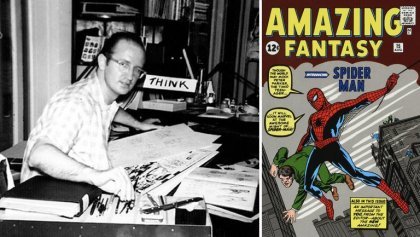
Ditko tells the story of Steve Ditko, a comic book illustrator virtually forgotten by the masses, but celebrated by comic book fans everywhere. Chronicling his rise in the comic book industry, Ditko was instrumental in Marvel’s success by co-creating two of comics most iconic characters, Spider-Man and Doctor Strange and several of DC’s silver age icons, Hawk and Dove, Shade the Changing Man, and the Creeper. Ditko also worked for virtually every other publisher of note including Warren, Charlton, Pacific, and Eclipse, co-creating other iconic characters like Mr. A, the Question and Blue Beetle. he also created some of the 1950s most startling imagery in sci-fi and fantasy comics. ironically, Spiderman was meant to be one of those fantasy one-shot characters for a comic book called Amazing Fantasy. Stan Lee, planning to cancel the poor-selling monster book, let Ditko draw one of those far-out characters for the last issue. The rest, as they say …
The Daydream Theatre and TheatreLab NYC present DITKO, a play written & directed by Lenny Schwartz on October 1 & 2 at 7:30pm Tickets: $15 in advance at Ovationtix.com and $20 at the door the location of TheatreLab is 357 WEST 36th STREET 3RD FLOOR – NEW YORK
Some actors have the honor of playing Hamlet, Romeo & Juliet, and Lear … others have a more lofty experience. Derek Laurendeau plays Steve Ditko; Dave Almeida dons a cigar for his role as Jack Kirby; Anne Bowman plays a mystic master – no, not Doctor Strange … Ayn Rand. And Geoff White takes the elevator to the floor ABOVE Mount Olympus as Stan Lee. The avengers assembled also include Samantha Acampora, Christopher Ferreira as Jerry Robinson/Dick Giordano (talk about Marvel AND DC), Mindy Britto, Emily Lamarre, and Timothy DeLisle.
At the New York Comic Con in 2010, Stan Lee entered the stage and someone from the back of the house screamed “YOU’RE A GOD, STAN” We asked the cast … well is he? Well, are you? And what’s it like playing Gods.
Derek Laurendeau:
To me comic books aren’t becoming a religion, they are one. As with most religions you have practices, prayers, meditations, and most of all stories that give the moral standards and practices of them. Comic books in their own way share many of these. Many people routinely make pilgrimages to the conventions or their comic book shops to share in the collective story telling of hundreds of artists and writers. The whole community (artists, editors, writers, fans, etc.) shapes these stories. The stories give us the hope and ability to cope with the world around us. The comics are also a mythology on their own. Superheroes are god like and while the stories can be bombastic, heroic adventures at the end of it all the heroes themselves are just as human as we are and through that relatability you can gain strength to overcome any difficulties. Also like most religions there are divisions that you see when stories adapt and change. Most recently the Miles Morales Spiderman comes to mind as an example of the rift that can divide comic fans.
“I feel like we’re not playing gods. Ditko, Lee, Kirby, and Robinson were humans just like us.”
They had their flaws and faults just like anyone would have. The fans may see them as these deities, but at the end of the day they were just men and women creating from their imaginations. They created these characters not knowing what would happen. The act of creation is what they knew best and by putting the work in and giving their art every bit of energy they had they made magic happen on the pages. I feel like my responsibility to the role is to show the humanness of these great people. Yes they created heroes that will not be forgotten any time soon. But Steve Ditko, Jack Kirby, Stan Lee, and Jerry Robinson all started at the same place behind a table with nothing but an idea, paper, and something to write and draw with. The truth is anyone can do what they did as long as you have passion and are committed one hundred percent to making your destiny happen. However I do feel an extra responsibility to Ditko since very little is known of him and for a lot of people seeing the show it was the first time they had ever heard of him. So i feel a duty to do my best to represent Steve as the sure minded, smart, and talented artist he was.
Geoff White, like the characters he plays (Stan Lee) was a bit more irreverent.
Growing up in the 60’s, I was the usual comic book kid… I occasionally grabbed a Superman or Spiderman. I’ve always had a healthy respect for the art form, but as I began college and studying theatre, my focus changed and comics faded in my life Except for my many friends who are avid collectors. But, as an Actor, I do feel the responsibility of being true to any character I portray, but obviously playing Stan in the city, next to the Comicon is a little daunting. Fortunately, Lenny is a true Fan and an insightful Director and I truly feel the audiences will enjoy the ride as much as we do.
Dave Almeida plays another king. Jack “King” Kirby. The man attributed to some of the greatest comic book characters of all time – who never got the respect he deserved … until after his passing.
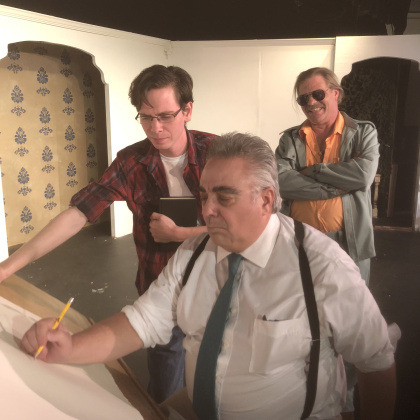
We the public may consider these creative writers and artists “gods”, but I would guess that they just considered themselves just “working Joes”, and getting paid for their services, just like screenwriters, journalists and commercial artists did at the time. These wonderful people gave us role models without even realizing it; role models who change the minds and hearts of a post war generation and their children.

Christopher Ferreira playing two comic book legends shared his thoughts as well.
When I was in grade school at that time, comics were the safe place where social outcast bookworms could find comfort in fantastic stories about heroes and a fantasy world. It was ours. Now comics are everyone’s. Now I’m the expert who pretty girls turn to to learn about this world of mythical legend. Now I feel like the prophets of old, leading new followers to the wonderful teachings of pulp fiction legends. I absolutely feel a strong responsibility to accurately portray such legends as Jerry Robinson and Dick Giordano. I met Jerry twice in the later years of his life at the San Diego Comic Con and I was so blown away by his intelligence, exuberant personality and humbleness. He did so much important work to get creators the credit and recognition they deserved. I can only imagine how he encouraged and helped Steve Ditko in his early days of coming into the comic book industry. Jerry was such a force in the comic book industry. So my goal in bringing him to life again onstage in this version is to show how human of a man he was. Comic book creators are people who care about the human race, I feel. They write stories that show the best humanity can be. Creating heroes that they wish we all could be.
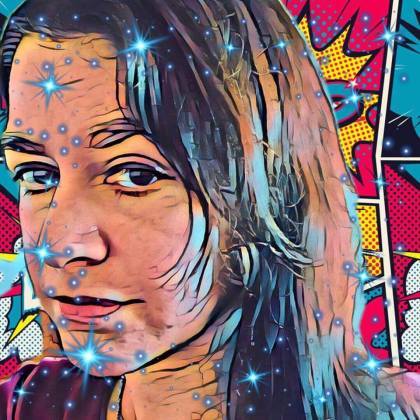
Anne Bowman practiced philosophizing by saying this.
What comes to mind is how comic book characters are like religious icons, known all over the world. Before I did this show I didn’t realize how often I see Spider-Man in my daily life, in many places other than TV. For example, I went to the beach with family a few weekends ago, and my friend’s five-year-old was wearing a Spider-Man t-shirt. I told him I was in a play about the man who drew Spider-Man, and his eyes got wide. I knew Spider-Man when I was his age, too. That’s pretty incredible.
Emily Lamarre and Mindy Britto looked up in the sky and had this to say:
Emily Lamarre: I’ve been thinking about this all day and haven’t really found an answer for this question. I’ve been an outsider to the comic book world and through Ditko I learned that Ditko was the real creator of Spider-Man. I think with why comic books are becoming a religion as people look up to these characters because they are strong, and brave. They even may pass down the stories of these characters to their children in hopes to take the lessons and ideals that they had and use them in real life. With the creators like Jack Kirby, Steve Ditko, Jerry Robinson, and Bill Finger, they created these characters and the world they live in for people to read and look up to.
Mindy Britto: To be honest, comic books are a bit of a new phenomenon for me. I feel that comic books offer an escape into another reality. Comics are always indicative of pop culture, reflecting both modern society and a new market of readers. Writers come up with religious back stories to keep the character current and provide relatability and depth. It makes sense that comic books are becoming a religion due to the complexity of the world that we live in and the desire to explore and uncover.
=================
JAY MICHAELS, an indie film and live event producer and promotional executive, is considered an authority on comic books and horror movies. He is the host of “Terror Talk” on the burgeoning streaming station, Terror TV. Michaels, a notable presence in the world of independent theater and film as a producer and an actor, has been charting horror and science-fiction on film and television and appraising comic books and other ephemera since 1973. He is also a judge for the Boston Sci-Fi Film Festival.
Adventure takes four colors, two staples, and one dream Article contributed to Five Star Arts Journal by Jay Michaels Comic Books - like their characters - have a secret identity.
1 note
·
View note